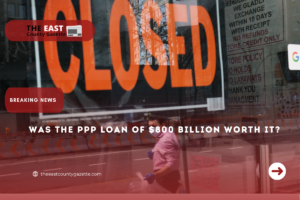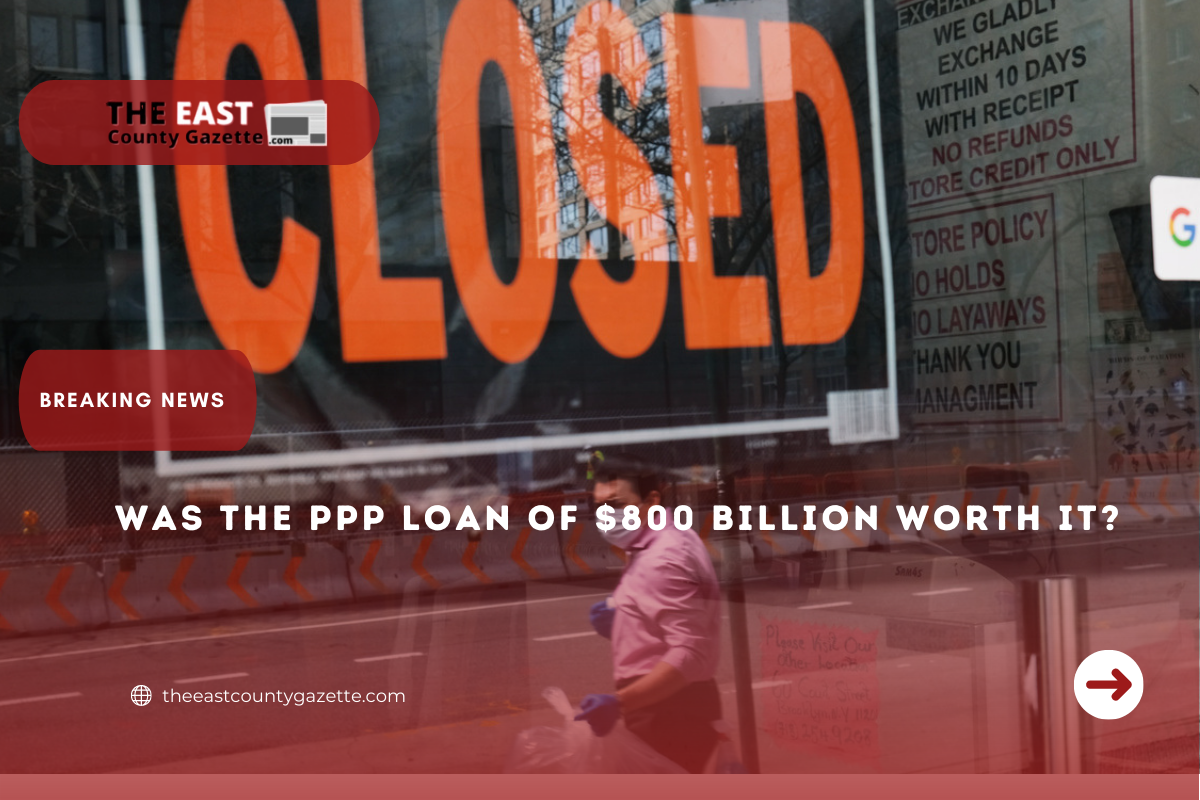The Paycheck Protection Program, launched by President Donald Trump, aims to help small businesses and their employees recover quickly from the coronavirus outbreak. Biden has changed it slightly to try to send more of the money towards impoverished neighborhoods and minority-owned businesses.
Now that the program has been running for over two years, taxpayers are wondering what they received for their $800 billion investment. Biden’s administration officials claim the program has helped keep racial disparities in check, but an influential academic study finds the overall cost per job saved was high, and the benefits went primarily to the wealthy.

According to the Biden administration, the forgivable-loan program was reworked so that more benefits went to poorer towns, minorities, and small firms — those in which the owner is the lone employee — after the adoption of the $1.9 trillion coronavirus relief plan.
Michael Negron, a senior White House adviser for small businesses, said, “The administration has a major focus on racial and social fairness, and small business is a significant component of it.” “Entrepreneurship is critical to our equity aspirations because it helps to build wealth that can be passed down for generations.”
The PPP program, as it is usually called, was found to be prohibitively expensive per job saver, according to an independent assessment. Furthermore, the majority of the payouts went to business owners who were the best equipped to deal with the epidemic.
Per job that was saved, the report estimates that workers who would have been laid off received just 23-34% of the PPP dollars spent on them, at a cost of as much as $258,000.
In the midst of an economic crisis, there is a wide-ranging discussion about how best to respond. There are demands to get the proper quantity of money out as quickly as possible without increasing inequality or causing other forms of backlash, such as rising inflation.
It took two presidents to get Congress to allow $5.8 trillion in relief expenditures, which included innovative interventions like forgiving loans, direct payments and an increased child tax credit that were paid into people’s bank accounts on a monthly basis.
When MIT economist David Autor and his colleagues examined PPP, they found that it was an overly blunt instrument. The United States, unlike Canada, the Scandinavian region, Portugal, and Brazil, did not have data systems in place to keep track of individual enterprises’ payrolls.
During a downturn, these tools would have made it easier to allocate funds based on actual need..” Data resources were not invested in by the U.S., and as a result, the help could not be targeted.
In fact, “the U.S. has instead starved the beast,'” said Autor. “The end consequence is not a reduction in the number of government agencies. It’s less efficient government, plain and simple.”
The Biden administration was seeking to prevent the epidemic from enlarging the country’s racial wealth disparity by modifying the PPP program’s rules.
Only 2 percent of private business ownership assets are owned by black Americans, according to the Federal Reserve, while making up 12 percent of the U.S. population. Hispanics own 2.5% of total wealth in the United States, while Blacks own just 4.3%. This is well below their percentage of the overall U.S. population.
The full impact of the epidemic was not to be realized in the economy when PPP was introduced by the Trump administration in 2020. Because of the urgency to disburse funds as rapidly as possible in light of the unpredictability of the situation, loans were routed through big banks with established ties with qualified enterprises.
Bipartisan support was clear in September 2020, when Steven Mnuchin, the Treasury Secretary, spoke before a congressional committee, claiming that the payments had supported 50 million jobs. But even as he advocated for more funding, Mnuchin insisted that the most essential thing was to offer relief “immediately” during the outbreak.
Historically underserved groups have found it more difficult to get their hands on the money because of the pressure to move quickly. As a result, shortly after assuming office, the Biden administration rewrote the book on how things should be done.
Only businesses with less than 20 employees were allowed to apply for PPP loans during a 14-day window in February 2021. Individuals who work for themselves might now get the money they need because of a change in the way PPP loans are assessed. Community and minority-owned financial institutions received a larger share of the loans.
According to data provided by government officials, PPP gave about 2 million loans last year to enterprises in low- to moderate-income regions, a 67% increase from the year before. During Trump’s presidency, the number of enterprises with fewer than 20 employees receiving loans increased by 35%.
An increase in the number of small businesses targeted by the administration reduced the average loan amount. Last year’s average was $42,500, down from the expected $101,500 in 2020.
We inherited a program that was riddled with injustices, according to Small Business Administration Administrator Isabel Guzman.
According to analysts, the Biden administration had “no discernible influence on employment” as a result of the distributions. In May 2020, despite a wave of infections, the job market began to improve and is expected to continue to do so. As a result, there were fewer jobs that needed to be saved.
Autor estimates that the wealthiest 20% of households received around 85% of the program’s benefits. According to Biden, it is possible that the adjustments he made to PPP may have resulted in a more equal system, but the proof will only emerge in the next few years.
Because of the lack of urgency of the issue, “they sought to be better stewards of the program,” Autor added. Some small enterprises and their creditors were saved thanks to PPP, so it’s not like PPP did nothing.”
The giveaway from future generations of U.S. taxpayers “to certain profitable firms was likewise startlingly enormous.”

